I need you to imagine this: I’m standing in a Cuban resort lobby at 7:15 AM, watching four granddaughters aged 5 to 11 negotiate ice cream for breakfast while Tina calmly explains why that’s not happening. Two are crying. One’s bargaining. The fourth has somehow acquired a pool noodle and is using it as a sword. We’ve been here eighteen hours. We have six more days. I need a beer. It’s 7:15 in the morning and I’m seriously considering whether resort bars open early for emergencies. Welcome to traveling with children, where every vacation becomes an endurance test disguised as family bonding.
The Brutal Truth About Family Travel With Kids
Let me be clear: some people are naturals at traveling with children. Tina spent years taking her two boys to the Caribbean annually when they were young. She planned activities, managed schedules, handled meltdowns, and returned home with great photos and intact sanity. She’s got whatever gene makes this work.
I don’t have that gene.
Our Cuba trip with four granddaughters last year taught me this lesson BIG time. What Tina handled with competence and grace, I experienced as barely controlled chaos. She remembered sunscreen. I forgot which kid was allergic to what. She packed snacks. I wondered why everyone was suddenly starving twenty minutes after lunch. She planned quiet time. I didn’t understand why everyone needed to nap when the pool was right there. (Actually, I think I forgot there were allergies..)
Different skill sets, let’s say.
But here’s the thing: whether you’re a natural like Tina or struggling like me, traveling with children follows certain universal truths. It’s harder than you think. It’s more expensive than you planned. And it’s something you’ll either love or never attempt again.
Why Do People Travel With Children Anyway??
Despite my Cuba experience suggesting otherwise, plenty of families successfully travel with kids. Some even enjoy it. Go figure.
Creating Memories matters to people. Your kids won’t remember much before age 5, but you’ll have photos proving you took them places. Older kids actually do form lasting memories. Those become the stories they tell their own children later.
Educational Value sounds pretentious but it’s real. Seeing castles beats reading about castles. Tasting food from different cultures beats looking at pictures. Swimming in actual oceans beats community pool visits. Kids learn through experience, and travel provides experiences books can’t match.
Breaking Routine benefits everyone. Kids thrive on routine until they don’t. A week somewhere new shakes things up. Sometimes that’s refreshing. Sometimes it’s destabilizing. You won’t know which until you’re there.
Family Bonding happens whether you plan it or not. You’re spending concentrated time together without normal distractions. That creates closeness. It also creates conflict. Both are bonding…technically…right?
Your Own Sanity might require occasional escape from daily life. Yes, you’re bringing the chaos with you. But it’s chaos in a new location. With a pool. And a bar. That counts for something.

The Different Ages of Travel Hell… I Mean Joy
Traveling with a 2-year-old differs wildly from traveling with a 12-year-old. Each age presents unique challenges that’ll make you question your judgment.
Infants (0-12 months) are simultaneously the easiest and hardest. They’re portable. They sleep anywhere. They don’t need entertainment. But they also need constant attention, regular feeding, diaper changes, nap schedules, and very specific items you definitely forgot to pack. Plus they cry on planes, which makes you that person everyone hates.
Toddlers (1-3 years) have discovered independence without developing judgment. They’ll run directly toward danger while you’re unpacking. They have opinions about everything but vocabulary for nothing. Nap schedules rule your life. Miss naptime by thirty minutes and you’ve ruined everyone’s afternoon. Ask me how I know.
Preschoolers (3-5 years) talk constantly, question everything, and possess energy that violates thermodynamic laws. They’re old enough to remember the trip but young enough to melt down over weird things like the wrong color towel. One of our granddaughters cried for an hour because her sister got the dolphin floaty. There was an identical dolphin floaty available. Didn’t matter.
Early Elementary (6-8 years) hit the sweet spot for some families. They can walk reasonable distances, follow basic instructions, and entertain themselves briefly. They’re also developing strong preferences about food, activities, and bedtime that won’t align with your plans. The pool noodle sword incident? Eight-year-old.
Tweens (9-12 years) start forming real opinions about travel. Some love adventure. Others want to stay home with friends. They can handle longer activities but might complain the entire time. They’re old enough to appreciate museums but young enough to get bored after twenty minutes. Managing expectations becomes your full-time job.
Teenagers (13+) bring different challenges. They’re physically capable of anything adults do but emotionally somewhere between “this is awesome” and “I can’t believe you’re making me do this.” They might actually enjoy travel or they might spend the entire time on their phones wishing they were anywhere else. At least they can carry their own luggage.
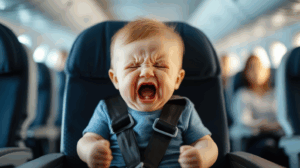
Where to Take Kids Without Losing Your Mind
Not all destinations suit family travel. Some places make it easier. Others practically guarantee disaster.
All-Inclusive Resorts top the list for stress-free family travel. The Caribbean especially. Tina proved this works. Everything’s on-site. Food’s handled. Activities are organized. Kids’ clubs exist so parents get breaks. Pools have lifeguards so you can breathe for five minutes. The boss took her boys to these resorts annually and came home refreshed instead of destroyed.
Mexico and Dominican Republic offer the most family-friendly all-inclusives. Safe resorts. Beautiful beaches. Built-in entertainment. Many have kids-only pools, teen clubs, and adults-only areas for when grandparents need recovery time. Group travel sometimes makes this even better – multiple families sharing childcare duties.
Orlando exists specifically for family travel. Disney, Universal, SeaWorld, LEGOLAND – the entire city caters to children. It’s expensive and exhausting but everything’s designed for families. You’re not wondering if your kids will be welcome. That’s the whole point of the place.
Beach Destinations generally work well. Kids love beaches. Parents can relax while kids play in sand for hours. Choose beaches with calm water and amenities nearby. Wild coastlines with rip currents and zero facilities? Save those for when kids are grown.
European Cities can work but require realistic expectations. London, Paris, Rome – these have enough kid-friendly attractions to work. But you’re not covering the Louvre in detail with a 6-year-old. You’re doing highlights, taking breaks, and accepting you’ll see maybe 40% of what you want and what you’d see alone. Places like Spain have family-friendly cultures where kids are genuinely welcome everywhere.
National Parks offer incredible experiences for nature-loving families. Grand Canyon, Yellowstone, Yosemite – these create lasting memories. But they also involve hiking, camping, and roughing it. Know your family’s tolerance for outdoor adventure before committing.
Cruises solve multiple problems at once. Contained environment. Built-in activities. Food always available. Kids’ programs. Different ports mean variety without packing and unpacking. Some families swear by cruises. Others find them claustrophobic. You won’t know until you try.

When Traveling with Children Makes No Sense
Sometimes the answer is just don’t.
Long-Haul Flights with toddlers qualify as cruel and unusual punishment. For everyone involved, including the other passengers who booked tickets without expecting a soundtrack of crying. If your destination requires 10+ hours in the air with kids under 5, seriously reconsider.
Highly Structured Tours don’t accommodate children’s needs. That 12-hour bus tour through Tuscany? Not with a 4-year-old who needs bathroom stops every hour and can’t sit still for twelve minutes.
Adventure Travel involving serious physical challenge or risk probably should wait. Backpacking through Southeast Asia. Trekking in Patagonia. These adventures are better appreciated without worrying about your 7-year-old’s ability to handle the trail.
Luxury Destinations where the whole point is quiet sophistication. Bringing kids to an adults-focused resort or high-end spa destination benefits nobody. You’ll stress about their behavior. Other guests will consider poisoning your food. Save your money.
Destinations Where You’re the Entertainment fail immediately. If the location has nothing for kids and you’re responsible for keeping them occupied 24/7, you haven’t taken a vacation. You’ve relocated your exhaustion.
The One Activity That Actually Works
Find the resort or hotel with the best kids’ club. I’m not joking.
Quality kids’ clubs provide structured activities, trained staff, age-appropriate entertainment, and the gift of adult time. Parents and grandparents need breaks. Kids need socialization with other children. Everyone wins.
Look for clubs that do crafts, games, sports, maybe mini field trips around the resort. They should be staffed by people who actually enjoy children and have experience managing groups. Check reviews specifically about kids’ club quality before booking.
We didn’t take advantage of this enough in Cuba. I spent the week at maximum capacity while a perfectly good kids’ program existed fifty meters away. Learn from my mistakes.
The other activity that works universally: pools. Kids will swim for hours. Parents can sit poolside reading and pretending to supervise. It’s the closest thing to relaxation you’ll find while traveling with children. That and the bar. Mostly the bar.
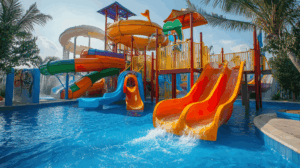
The Establishment Saving Your Sanity
When traveling to family destinations, find breweries or pubs with family-friendly patios. These exist specifically because parents need beer and kids need space. It can at least make traveling with children more tolerable.
Pirate Republic Brewing in Nassau gets this balance right. It’s a brewery and restaurant with a pirate theme that kids think is cool without being so kid-focused that adults want to leave immediately. They’ve got a proper beer menu – their Island Pirate Ale and Blonde Ale are both solid – plus food that works for everyone. The space can handle families without turning into Chuck E. Cheese.
Look for places with outdoor seating, kid menus that aren’t just fried food, and tolerance for reasonable noise levels. Avoid anywhere too precious or quiet. You need establishments that understand families exist and built their space accordingly.
The beer serves essential purposes beyond enjoyment. It signals to yourself that despite spending your vacation managing children, you’re technically on vacation. It provides necessary chemical assistance for patience. And it gives you something to look forward to after approximately your 47th explanation of why we’re not buying another toy.
Parents and grandparents traveling with children need beer. This isn’t indulgence. This is survival.

Planning Family Travel Through Professionals
Booking family travel yourself means spending hours researching kid-friendly hotels, confirming amenities, verifying age policies, arranging transfers with car seats, and a thousand other details that’ll make you exhausted before you leave home.
Or you could not do all that.
Boarding Pass Travel specializes in family travel planning. They know which resorts actually deliver on kid-club promises. They understand the difference between “family-friendly” and “technically tolerates families if they’re quiet.” They book rooms near elevators so your 3 AM hallway walks with a crying baby don’t wake entire floors.
They also know when to talk you out of bad ideas. “Actually, that destination isn’t great for kids under 8” saves you from expensive mistakes. Professional travel agents have seen every family travel disaster and learned how to prevent them.
The planning alone justifies the service. Someone else handles details while you focus on preparing children for travel. Which is its own full-time job.
What We Learned From Our Experiences
Tina’s annual Caribbean trips with her boys worked because she understood her limits and planned accordingly. All-inclusive resorts. Age-appropriate activities. Realistic schedules. She knew what she could handle and structured trips around that knowledge.
Our Cuba granddaughter trip taught completely different lessons. Four kids ages 5-11 hit every possible challenge simultaneously. Different sleep schedules that made no sense. Competing interests that couldn’t all be satisfied. Varying maturity levels that required totally different approaches. Constant negotiation over everything from meal timing to which pool we’d use. By day three I was mentally counting down hours until our departure flight.
Tina handled it better because she’s experienced this chaos before and developed coping strategies. I thought grandparent trips would be fun bonding experiences. Turns out I prefer grandchildren in smaller doses and controlled environments. Like my house. Where I can send them home.
The honest assessment: some people thrive on family travel. Others survive it. A few of us wonder why we ever thought this was a good idea. All three reactions are valid.
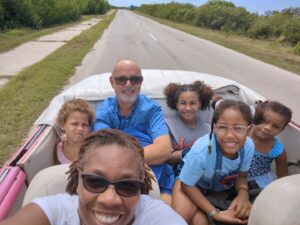
When Family Travel Actually Works
Despite my Cuba experience, family travel does work for many people. Our three sons joined us in Cuba for our destination wedding in 2016. That worked because they were adults. Self-sufficient adults who can pack their own bags and don’t need constant supervision.
That’s the secret: family travel improves dramatically when children grow up.
Multi-generational trips with adult children offer all the family bonding without the chaos of managing little humans. Everyone pays their own way. Nobody needs naptime. Conversations happen without interruption. You can stay out past 8 PM. It’s glorious.
If you’re reading this while contemplating travel with young children, I offer both encouragement and warning. It’s possible. People do it successfully. Some even enjoy it. But know what you’re signing up for.
It’s not a vacation in the traditional sense. It’s an experience. Sometimes a good one. Sometimes one that makes you swear you’ll never do it again. Often both simultaneously.

The Family Travel We Won’t Be Planning
We took four granddaughters to Cuba last year. We have six granddaughters total. Do the math.
The remaining two are younger. Which means theoretically we’d need another trip to be fair. Theoretically.
Realistically? I’m not convinced we’re doing that again. Maybe individual granddaughter trips when they’re older. Maybe adult family trips when everyone can handle their own luggage and opinions don’t involve screaming. Maybe we stick with seeing grandkids at our house where there’s adequate wine and escape routes.
Tina might feel differently. She’s got better instincts for this. But me? I’ve learned my limits. They stop somewhere before managing four children simultaneously in a foreign country while maintaining the fiction that this is fun.
Other families do this successfully. Regularly even. They have systems and patience and some supernatural ability to find joy in chaos. God bless them.
Me? I’ll stick with travel that involves fewer negotiation sessions about ice cream timing and more time actually relaxing. Call it what you want. I call it knowing what’s good for me.
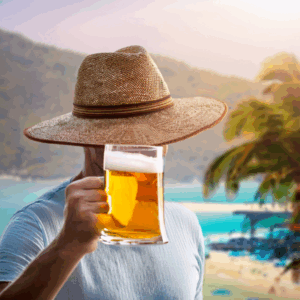
Cheers!

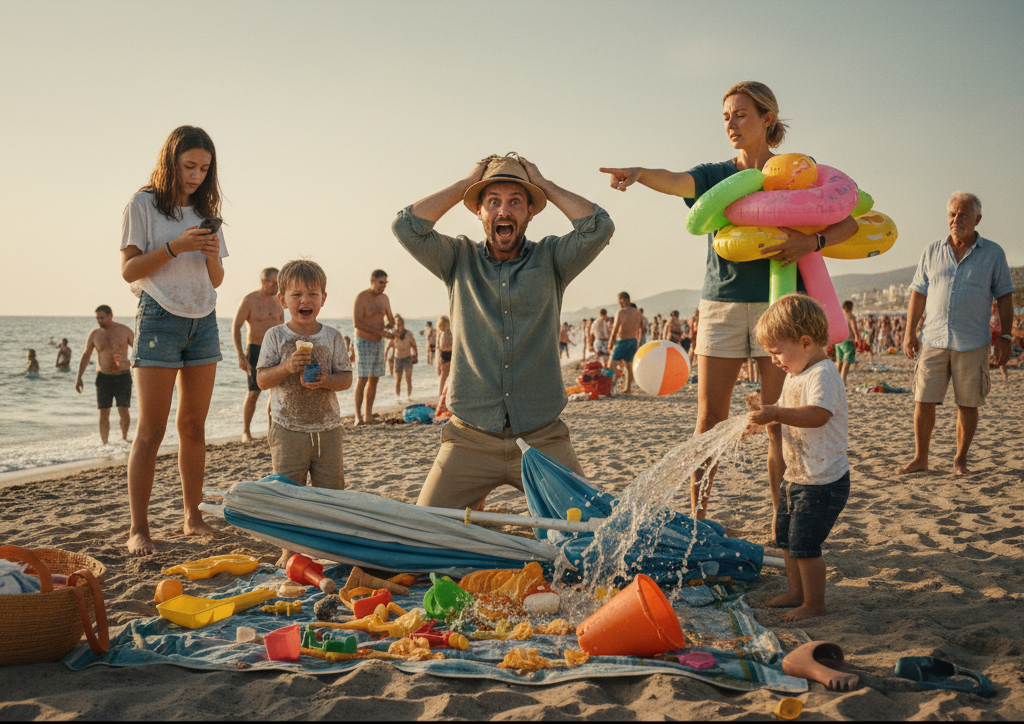
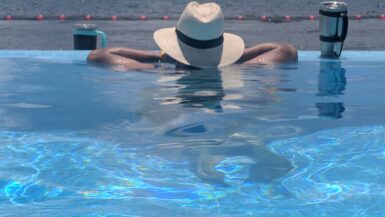

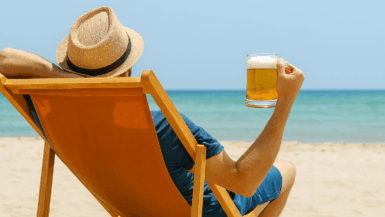
Leave a reply